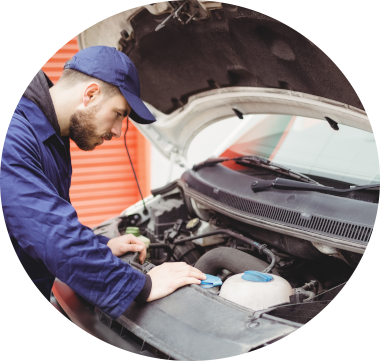All Categories
Featured
Correct tire upkeep is key to prolonging the life of your car and making certain a smooth and risk-free driving experience. Two of the most important tire services are tire rotation and positioning. These services not just avoid premature tire wear but additionally improve handling, gas performance, and total safety. If you're unknown with what tire turning and positioning require, below's an extensive take a look at why they matter and how they benefit your car.
What Is Tire Rotation? Tire turning refers to relocating your tires from one placement to an additional to ensure they wear evenly. The reason tire rotation is necessary is since not all tires wear the exact same method.
By turning your tires consistently, you can stabilize out the wear throughout all four tires. This helps them last much longer and enables for even more also grip, enhancing handling and stability. A lot of manufacturers advise turning your tires every 6,000 to 8,000 miles or based on the lorry's handbook.
What Is Tire Positioning? Tire positioning, likewise called wheel alignment, refers to the process of changing the angles of your cars and truck's wheels to satisfy the producer's specifications. The goal of placement is to ensure that all four tires are directing in the right direction and at the appropriate angles, which enables optimal handling, safety and security, and tire life.
There are 3 main positioning angles that are changed throughout an alignment check:

Camber: The tilt of the wheels when viewed from the front. If the camber is off, it can bring about irregular tire wear, as the tire will not make complete contact with the road surface area. Caster: The angle of the guiding axis when checked out from the side. Proper caster placement makes certain that your automobile is secure when driving straight which your wheel go back to its typical placement after a turn. Toe: The angle at which the tires direct internal or exterior when checked out from above. Inaccurate toe positioning can cause the tires to drag, resulting in unequal wear and reduced gas performance. Imbalance can occur with time because of typical driving or from striking barriers like curbs or pits. If your placement is off, it is very important to get it checked and corrected to avoid concerns down the roadway.
Why Tire Turning and Positioning Matter. Increased Tire Life:. Normal tire rotation ensures even tire wear, assisting you obtain the most gas mileage out of your tires. Irregular wear can cause you to replace tires too soon, which can be expensive. When your tires use equally, they last much longer, saving you cash in the lengthy term.
Improved Lorry Handling:. Proper alignment maintains your vehicle driving straight and steady, particularly at higher rates. Misalignment can create your cars and truck to pull away, making it more difficult to guide. By maintaining your tires lined up, you ensure your automobile deals with extra efficiently and predictably.
Enhanced Safety:. Tires that are not turned or straightened appropriately can put on erratically, impacting how well your lorry stops and corners. Misaligned tires or tires with uneven wear patterns might trigger reduced traction, specifically in damp or icy problems, leading to a greater threat of crashes.
Much Better Fuel Effectiveness:. Tires that are misaligned can produce rolling resistance, implying your engine has to work harder to relocate the cars and truck. This raises gas consumption and minimizes your car's fuel efficiency. Correct tire placement decreases rolling resistance, which can boost gas mileage.
Indicators Your Tires Need Rotation or Alignment. While it's vital to remain on top of normal tire turnings and positionings, there are a few indications that might suggest your tires need attention:
Irregular Use: If you notice that a person tire is a lot more used than the others, it's likely time for a turning. Steering Pull: If your vehicle pulls to one side or feels off-center, it can be an indicator of misalignment. Resonances: If you really feel vibrations in the guiding wheel or the auto, it could be as a result of a placement issue. Noisy Tires: Squealing or loud tires can show improper turning or imbalance. If you notice any one of these indicators, it is essential to obtain your tires inspected by a specialist.
Just How Typically Should You Turn and Align Your Tires? Tire rotation must usually be done every 6,000 to 8,000 miles, though this can vary based on your driving problems and the sort of lorry you drive. It's additionally a good idea to have your tires rotated whenever you obtain an oil change.
For alignment, you ought to have your tires lined up every 1-2 years, or more frequently if you notice any kind of problems with taking care of or irregular tire wear. If you hit a huge pocket or curb, it's wise to obtain a positioning check today.
Verdict: Normal Upkeep for Optimum Efficiency. Tire turning and placement are 2 easy however vital solutions that maintain your automobile running efficiently, successfully, and safely. By turning your tires on a regular basis and keeping your wheels appropriately aligned, you can expand the life of your tires, boost handling, and enjoy better gas effectiveness.
Latest Posts
Uncover Reduce Expenses on Car Maintenance with Montclare Auto Repair’s Special Deals
Explore Your Wyoming Banking Partner – Your Path to Superior Financial Services in Wyoming
Discover Your Financial Partner at WyHy – Key Advantages for Your Future
More
Latest Posts
Uncover Reduce Expenses on Car Maintenance with Montclare Auto Repair’s Special Deals
Explore Your Wyoming Banking Partner – Your Path to Superior Financial Services in Wyoming
Discover Your Financial Partner at WyHy – Key Advantages for Your Future